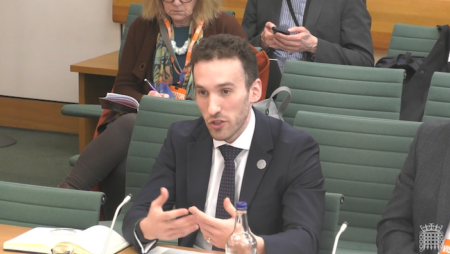Anna Allwright, strategy specialist, Cubic Transport Systems, discusses why now, with the worst of the Covid pandemic behind us, and a new focus on lowering emissions and increasing efficiency, the time to take Mobility as a Service (MaaS) concepts into the mainstream could finally be upon us.
For about six years, the concept of linking private transport providers with the public transport network has been discussed in major cities, but there has not been much tangible action outside of Finland, Australia and parts of the UK. Transit agencies need to begin taking steps now to integrate van, private car, shuttle and even bike/scooter share services with public transit under one payment method for a seamless journey from the first to the last mile.
Public transit agencies work on ‘elongated timelines’ and have to serve 100% of a city’s residents. However, venture capital-funded companies can take risks and invest heavily to take a share of the market as quickly as they can. Currently, they only target 20% to 30% of the population – those with smartphones, credit cards, disposable income and a propensity to move away from using their own vehicles.
As we come out of the Covid pandemic, transit agencies are challenged to re-attract riders and reconfigure how they operate to adjust for changed commuting and travel. Traditional approaches of relying on period passes for discounts and largely fixed route networks do not respond well to these challenges. We need new ways to incentivize riders with discounts, fare credit, fare capping, etc. to take certain modes of transport at certain times of the day.
Adjusting for different ridership patterns requires more integration of on-demand services and privately operated micro-mobility modes. Technology that is responsive to these challenges is critical. The technology enabling these advancements will be underpinned by SaaS models for more flexible updates, more reliable applications, ease-of-integration and cost savings for both the end user and city.
Adopting cutting-edge MaaS and MoD services will also encourage individuals to take public transit as it will be seen as an inexpensive, convenient option, therefore reducing congestion on the roads. It’s a win-win-win – a win for the city, a win for the public transport agency and, more importantly, it’s a win for the traveling public.

The time for MaaS is now
As part of the Mobility on Demand (MOD) and Mobility as a Service (MaaS) evolutions, we’re beginning to see more cities transitioning from deploying technology using traditional system integration approaches to software-as-a-service (SaaS) models. Long adopted by the private sector, SaaS is transforming the speed of innovation and reducing the cost of technology in mobility management applications. We expect to see these modernization efforts transform the way users interact with transit systems around the globe in 2022.
According to a recent report, the on-demand transportation market worldwide is expected to grow with a CAGR of 16.30% during the forecast period from 2021 to 2029. This tremendous growth in the near future is due to the rise in smartphones and internet usage.
Privately owned cars make up 76% of the mobility market and account for a large share of greenhouse gas emissions, while being used just 4% of the time. Additionally, passenger cars hold the highest market share in the on-demand transportation industry with more than 50% of the market revenue as of 2020. These stats point to the important need for a car replacement, but it needs to be done in such a way that won’t scare people off when they think about losing the independence and freedom that a single car brings.

Here is a snapshot into what these models would provide:
Multi-modal transportation: Instead of patching together services across different apps and platforms, consumers would see them displayed in a single interface. Consumers would receive personalized recommendations with digital tools and data, making journey planning easy and rewarding. Consumers would use apps to plan travel, pay for all services at once, receive tickets and get real-time travel information as they progress through their journey.
Open architectures: Government agencies would adopt open architectures with APIs that enable them to integrate the systems of multiple service providers, enable revenue collection and sharing, and use analytics to evolve capabilities. These platforms would also be easy to evolve by adding new partners, service areas and solutions.
Enhanced transportation management: Obviously, managing multi-modal transportation is a complex endeavor. Government agencies and partners will need access to traffic and incident management, decision support tools, vehicle tracking and passenger information – all integrated into one platform. By combining these capabilities, all partners would gain a single view of how transportation networks are operating in real-time. In addition to making daily operational decisions, this data could support requests for new investments in extending lines, adding more vehicles, refurbishing equipment and more.
Rider loyalty: Public transportation providers can take a page from retailers and offer loyalty programs to build ongoing ridership. Using rider data such as demographics, location information and interests, these organizations can deliver targeted campaigns to achieve their goals, such as purchasing monthly passes, traveling at non-peak times or completing a certain number of rides. Consumers win with great incentives and deals, while providers drive revenues and reduce costs.





